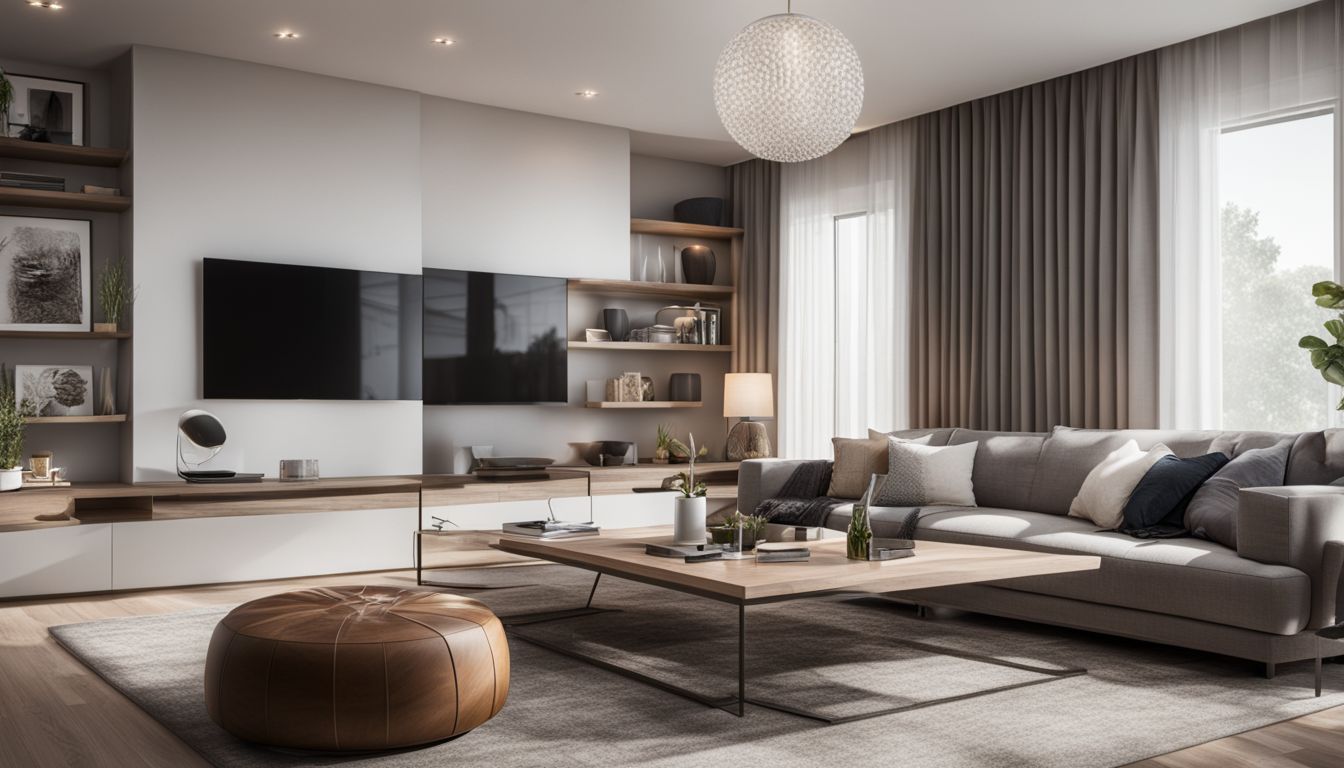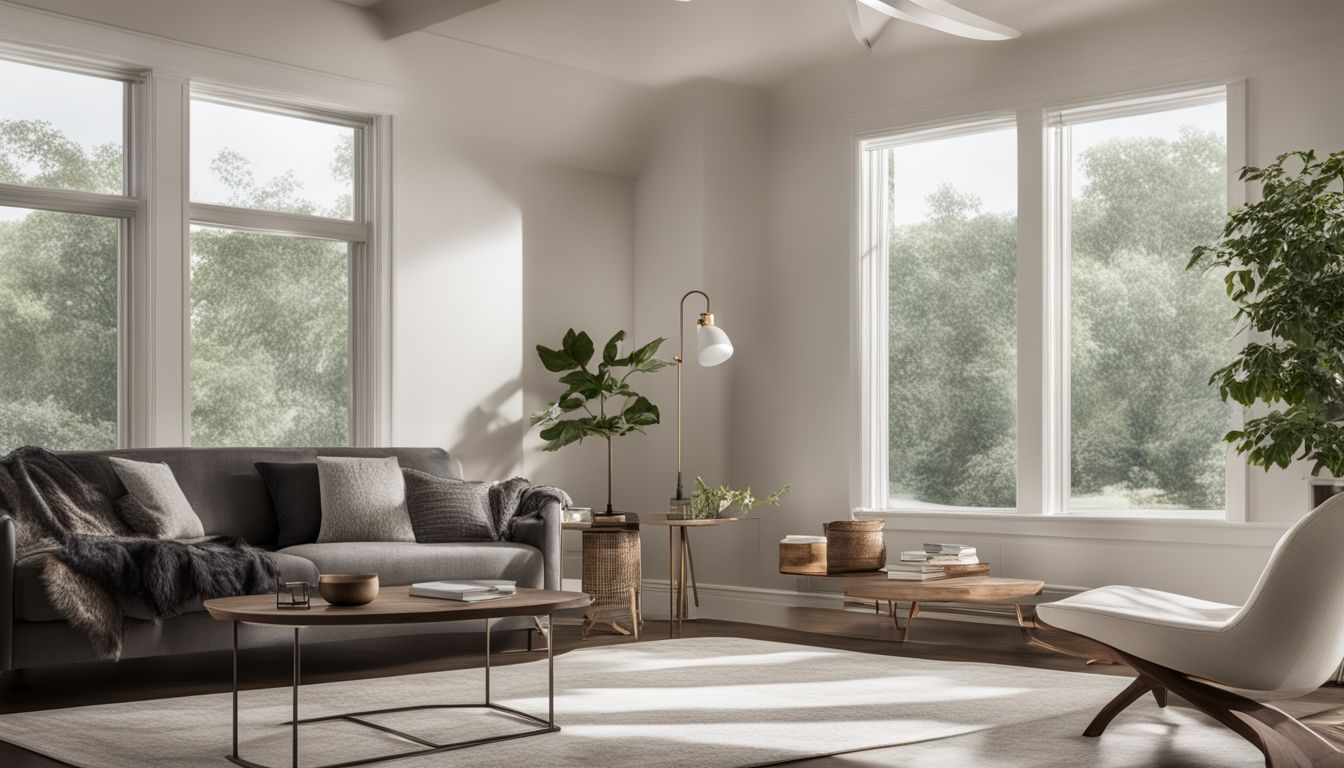
By: EcoHabitat Insights
Essential Guide to Passive House HVAC System Design
Finding the right HVAC system for your passive house can be tough. Passive houses use smart design to cut energy use drastically. This article will show you how to choose the best HVAC setup for comfort and savings.
Stay tuned, an efficient home awaits!
Key Takeaways
- Passive House HVAC systems use smart design for less energy use, keeping homes warm or cool with minimal energy. They have a tight seal to prevent air leaks and include advanced tech like heat pumps.
- Balanced ventilation is vital in passive house designs. It replaces stale indoor air with fresh outdoor air without losing heat or coolness, using short pipes for efficiency and providing consistent temperatures.
- Ductless mini split systems are good for passive houses because they’re energy-efficient and offer zone control. Ventilation-focused systems ensure fresh air supply and manage indoor quality efficiently, meeting Passive House standards.
Understanding Passive House HVAC Systems

Passive House HVAC systems stand out for their smart design and energy savings. This approach keeps homes warm in winter and cool in summer with minimal energy use. To do this, the system focuses on keeping a tight seal on the building to prevent air leaks.
It uses balanced ventilation that brings in fresh air and removes stale air without losing heat or coolness.
Passive House HVAC is not just about heating or cooling; it’s about achieving comfort with less energy.
These systems also feature advanced technology like heat pumps and recovery ventilators. A heat pump serves dual purposes: it warms up your home during cold months and cools it down when hot outside.
Recovery ventilators are key too—they save warmth from outgoing waste air to warm up incoming fresh air, reducing the need for additional heating. This all adds up to a comfortable indoor environment that saves money and supports green building standards.
Key Factors in Designing a Passive House HVAC System

Balanced ventilation ensures fresh air and efficient indoor-air quality. Energy efficiency is crucial for a well-designed system.
Balanced Ventilation
Balanced ventilation plays a key role in passive house projects. This system ensures an equal amount of stale, indoor air is replaced with fresh, outdoor air. It’s crucial for maintaining good air quality without losing heat or coolness.
A dedicated balanced-ventilation unit does this by pushing out the old air and pulling in new at the same rate. These units also use a heat recovery process to save energy.
This method keeps living spaces comfortable and energy bills low. The design includes short distribution pipes that make it efficient even in densely populated dwellings. After installing such a system, occupants enjoy fresher air and consistent temperatures all year round.
Now let’s explore how indoor-air quality benefits from this setup.
Indoor-Air Quality
Indoor-air quality is key in passive homes. A ventilation system that delivers fresh air and removes stale air is essential. This makes the living space more comfortable and healthy.
The air is filtered to reduce pollutants and contaminants. This process supports the Passive House Institute’s standards for superior thermal comfort.
A balanced heat- and moisture-recovery ventilation setup plays a big role here. It helps control humidity levels while saving energy. These systems work by exchanging indoor and outdoor air efficiently, without losing heat or coolness from your home.
They maintain a steady indoor temperature, making sure your house uses less energy to stay warm or cool.
Energy Efficiency
Energy efficiency is a cornerstone of passive house design, aiming to minimize energy usage and reduce environmental impact. Passive House HVAC systems are meticulously designed to achieve exceptional energy efficiency and thermal comfort by minimizing heating and cooling loads.
This approach helps in keeping the overall energy consumption significantly lower compared to traditional buildings, aligning with the evolving understanding of home HVAC towards more sustainable solutions.
The innovative use of balanced heat- and moisture-recovery ventilation is fundamental in achieving superior thermal performance while maintaining high energy efficiency standards. Moreover, integrating intelligent design principles underpins the focus on achieving unparalleled levels of energy efficiency in passive house construction.
By applying these concepts, alternative house design enthusiasts can enjoy dwellings that not only prioritize environmental responsibility but also offer significant operational cost savings over time.
Concepts: Energy Efficiency, Balanced Heat-and-Moisture-Recovery Ventilation
Different Types of HVAC Systems for Passive Houses
Passive houses use various HVAC systems to maintain energy efficiency and indoor comfort. Ductless mini split systems, ventilation-focused systems, and others offer unique benefits for different passive house designs.
Explore the detailed aspects of each system type to understand their suitability for your passive house project.
Ductless Mini Split Systems
Ductless mini split systems are energy-efficient and suitable for passive house designs. These systems consist of an outdoor unit connected to one or more indoor units. Utilizing heat pump technology, they deliver both heating and cooling, making them versatile and efficient.
Ductless mini splits help maintain consistent temperatures while reducing energy consumption, contributing to the overall efficiency of a passive house design.
These systems offer precise zone control, allowing different areas within the home to be heated or cooled individually according to specific needs. Additionally, ductless mini split systems operate quietly and require minimal maintenance compared to traditional HVAC systems.
Their compact size makes installation more flexible and less intrusive in the design of a passive house. Overall, ductless mini split systems contribute significantly to achieving the high energy efficiency standards required in passive house construction.
Ventilation-Focused Systems
Ventilation-focused systems are essential in passive house HVAC design. These systems ensure a continuous supply of fresh air while efficiently managing indoor-air quality and energy usage.
The focus on balanced ventilation helps maintain a healthy living environment with minimal energy loss, contributing to the overall energy efficiency and sustainability of passive houses.
These systems utilize advanced technologies such as heat- and moisture-recovery ventilation, ensuring optimal air quality without compromising thermal comfort or energy efficiency.
By prioritizing controlled airflow and efficient filtration, these ventilation-focused systems play a crucial role in meeting Passive House requirements related to indoor-air quality and energy performance.
Conclusion
Passive House HVAC system design prioritizes energy efficiency and thermal comfort. Balanced ventilation, indoor air quality, and energy efficiency are key factors in the design. Different types of HVAC systems like ductless mini-split and ventilation-focused systems cater to varying passive house needs.
By integrating these aspects intelligently, a passive house can achieve exceptional energy efficiency and superior thermal comfort.